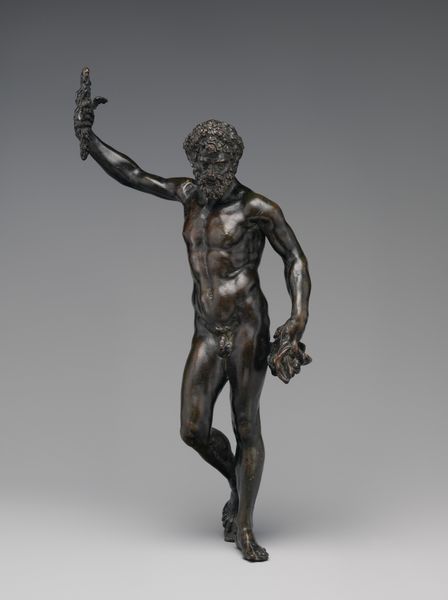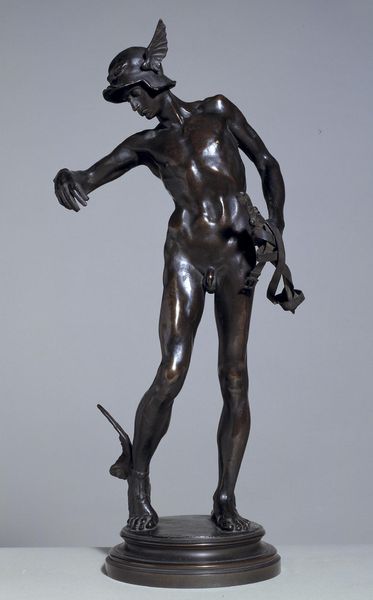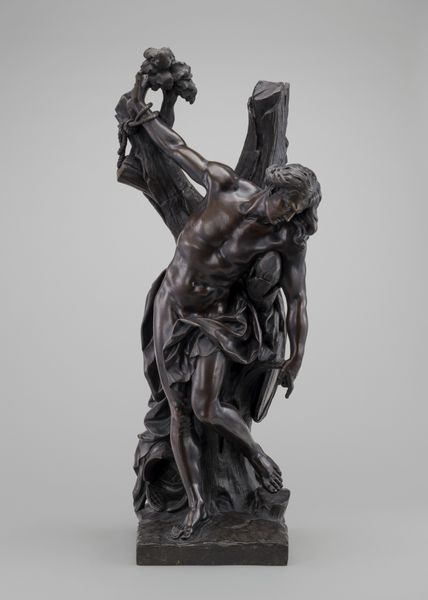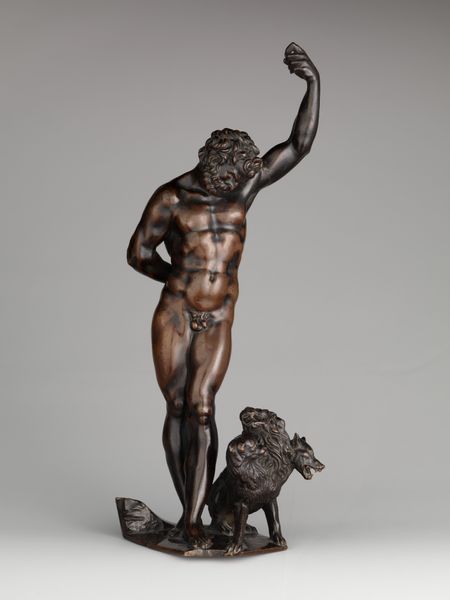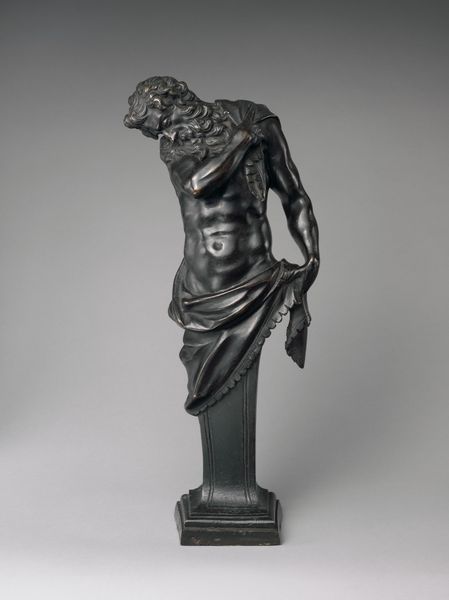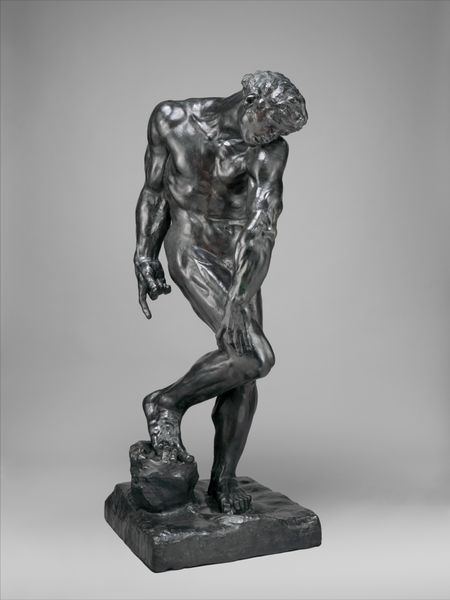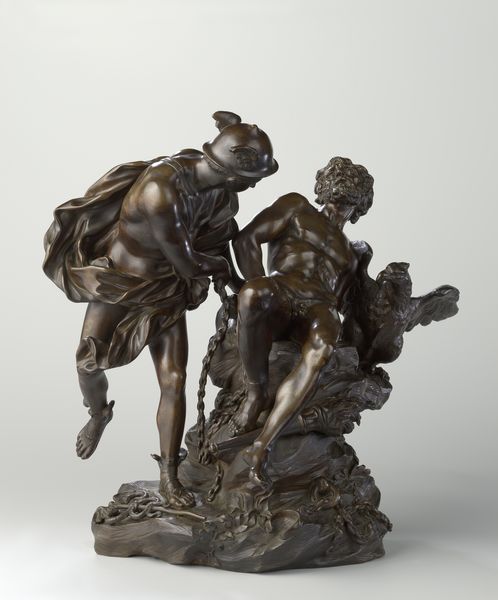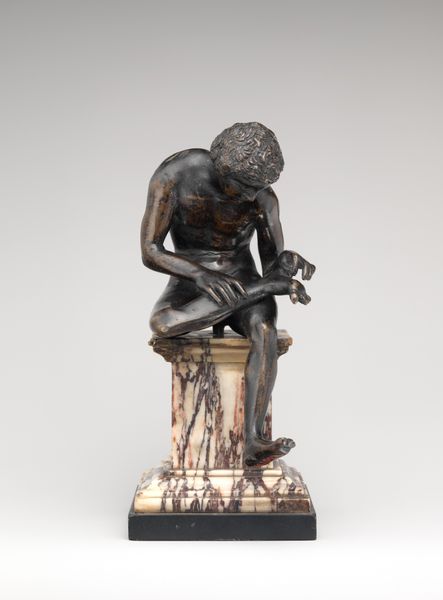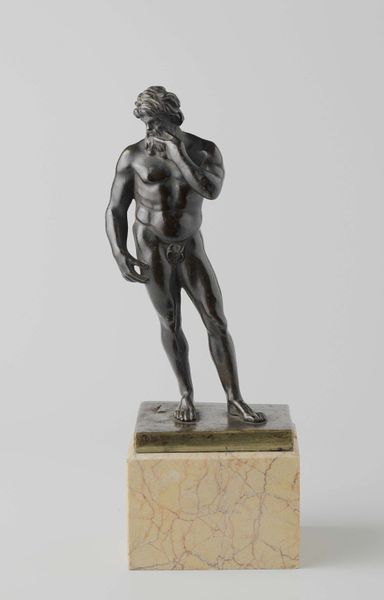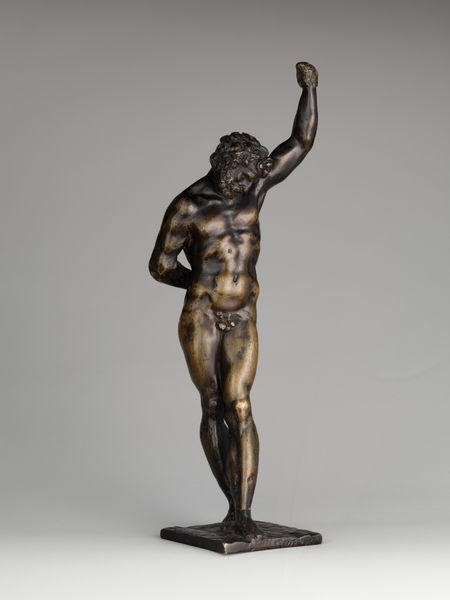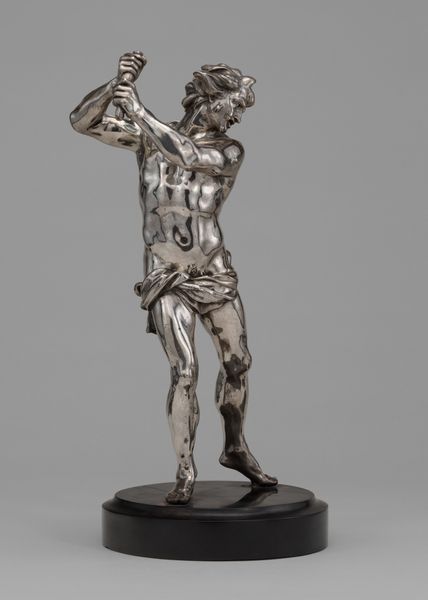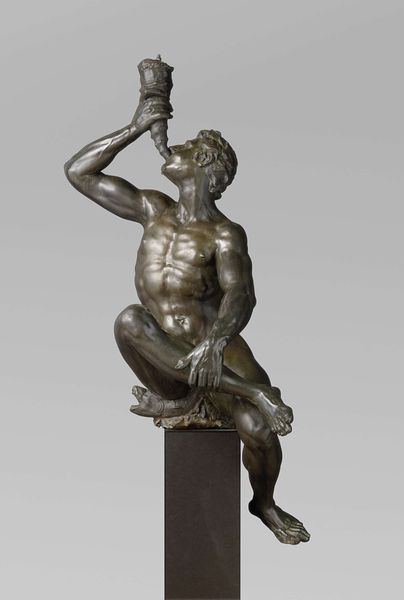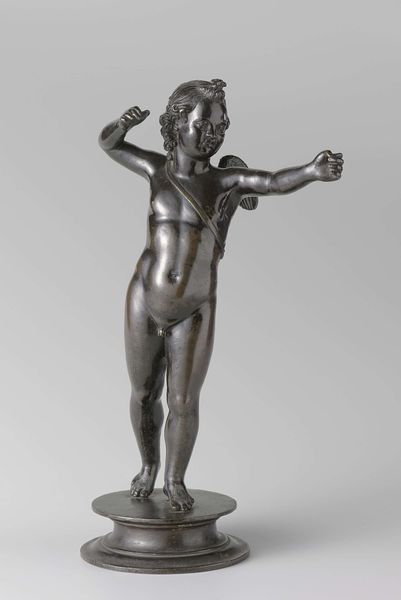
bronze, sculpture
#
sculpture
#
bronze
#
figuration
#
sculpture
#
realism
Dimensions: overall: 68.58 × 46.36 × 33.02 cm (27 × 18 1/4 × 13 in.)
Copyright: National Gallery of Art: CC0 1.0
Curator: The sculpture before us is entitled "The Bear Tamer," by Paul Wayland Bartlett. It’s rendered in bronze. What are your initial thoughts? Editor: The bronze is so patinated and almost black, giving it a somber, primitive feel. It feels surprisingly monumental. Curator: The figures evoke interesting power dynamics, don’t they? This piece seems ripe for considering human-animal relationships throughout history and the implications of control. The tension in their pose hints at how unstable this could all be. Editor: Absolutely. I’m drawn to the process of bronze casting and the amount of labor involved in this. One can appreciate Bartlett's skills by observing how the work showcases manipulation of form. It also makes one consider how such works were commissioned. Was it public work? Curator: Possibly. “The Bear Tamer” represents a larger societal trend toward Orientalism, prevalent in late 19th and early 20th-century art. It is related to an idealized, albeit colonial and romanticized, vision of exoticized "others." The image of the wandering bear tamer, performing for onlookers, often came up. Consider also that there are accounts of bear handling among marginalized groups. Editor: So, a cultural stereotype essentially immortalized through the labor-intensive medium of bronze, reproduced and disseminated through techniques allowing to display multiple works. Curator: Indeed, it reinforces existing perceptions of these people and places, reflecting back those ideologies for society to internalize and spread through colonial systems. What looks to be a dynamic of connection is based on systems of control. Editor: Thinking of it this way changes everything. It adds many layers to it. The relationship of maker to subject matter, too, becomes really important. I see now the weight of all that the materiality doesn't immediately reveal. Curator: Examining the power structures this piece invokes helps to bring necessary contemporary social awareness to our understanding of Bartlett's creation. Editor: And looking at the actual methods and labor to produce helps unpack where power structures like that manifest materially. Curator: Absolutely. Thinking through these dual layers enriches the experience and awareness we need for art and its relation to the world.
Comments
No comments
Be the first to comment and join the conversation on the ultimate creative platform.
